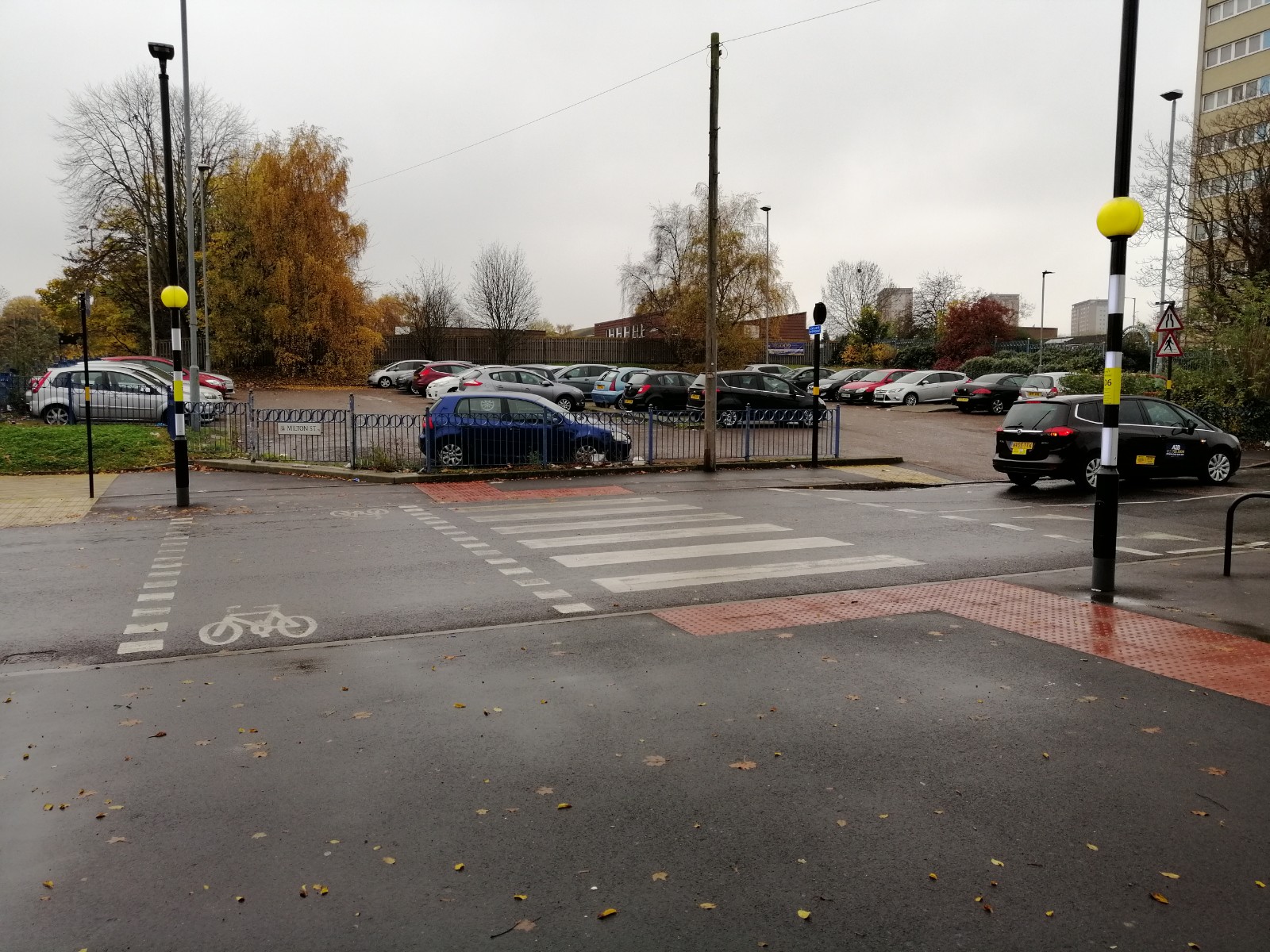Blue Cycle Routes, Birmingham
Introduction
As part of Birmingham City Council’s Cycle Revolution, new Blue Cycle Routes have been provided along the A34 and A38. These are on the A34 New Town Row/High Street and A38 Bristol Road/Bristol Street corridors. The goal is to provide an easy and quick route to Birmingham city centre.
Review
The routes are the first Blue Cycle Routes introduced in Birmingham, which follows a similar design to the London Cycle Superhighways. The schemes are designed to encourage people to switch from cars to bikes. They are mostly separated from traffic and pedestrians allowing cyclists to travel safely and quickly along the corridors. The cycle routes also have priority over vehicles where they cross side roads and have their own traffic signals at junctions and crossings. At some junctions, traffic turning movements have been banned to improve safety for cyclists.
“The only issue I found with the scheme was that the lack of directional signing and continuity of the route through the city centre. It was not easy to find your way through the city centre quickly and efficiently. This issue needs to be addressed by the council so that cyclists can connect more easily between the southern (A38) and northern (A34) routes.”
Tiger Crossing on Milton Street
A tiger crossing has been introduced across Milton Street, which combines a pedestrian zebra crossing with a crossing for cyclists. These crossings are rarely used in the UK at present, but will hopefully gain popularity as more cycle routes are introduced. Along the A38 Bristol Road, the blue route runs along the central reservation of a busy dual carriageway, providing a smooth and an attractive tree-lined route for cyclists.

Conclusion
Having ridden the routes, one of our engineers, Harminder Aulak said:
“I enjoyed cycling the blue routes and they certainly provided a comfortable and safe journey travelling along some of the busiest traffic routes in Birmingham. The priority given to cyclists at junctions and the provision of dedicated signals at busy intersections was welcomed and has elevated the importance of cycling amongst the hierarchy of road users. I would recommend everyone to give them a go, whether you are a novice or experienced cyclist. I believe Birmingham could become a cycling city, as has happened in London since the introduction of the cycle superhighways. To achieve this, the council needs to introduce more blue cycle routes along the other strategic routes radiating from the city centre. The blue routes help to lift some of the barriers to cycling in towns and cities, and once people have tried them, they will probably find cycling a good alternative to the car.”